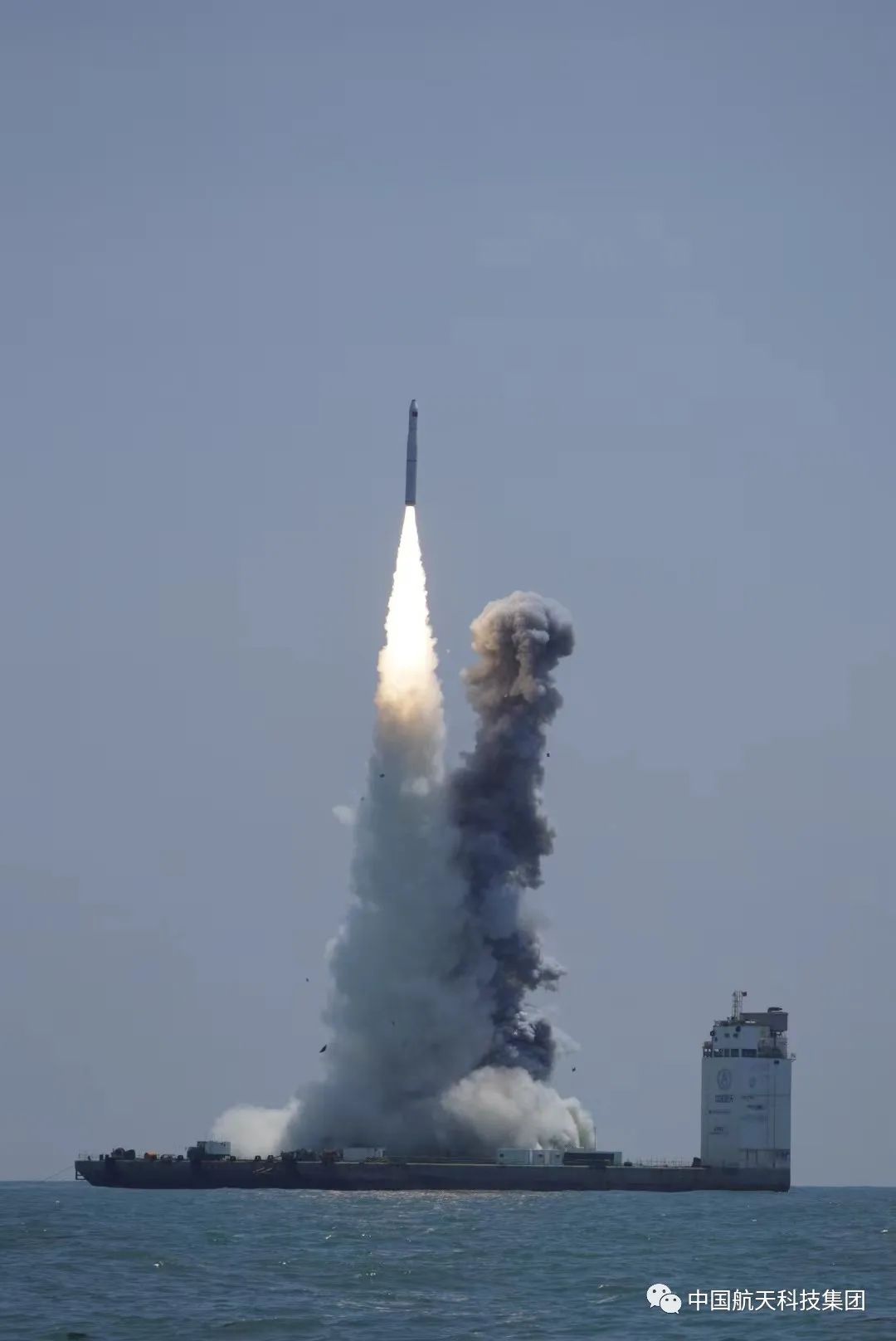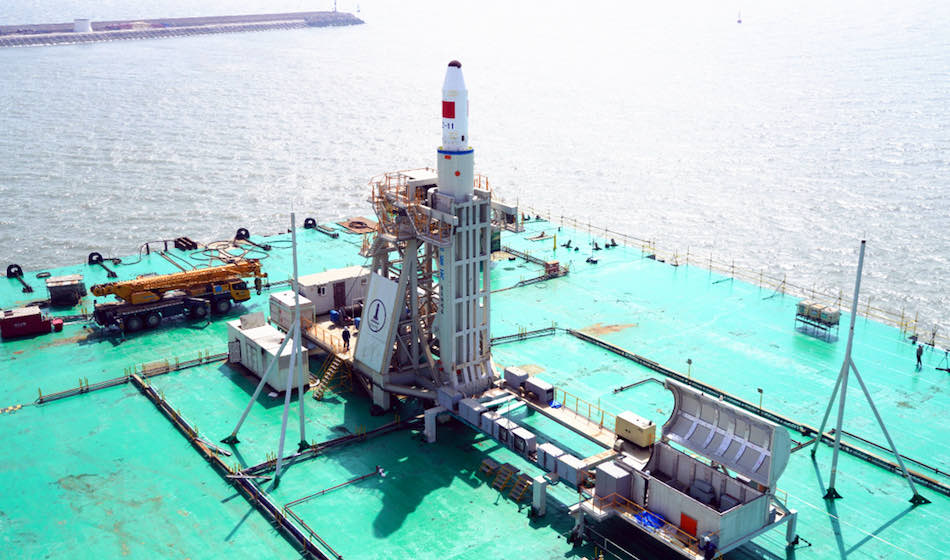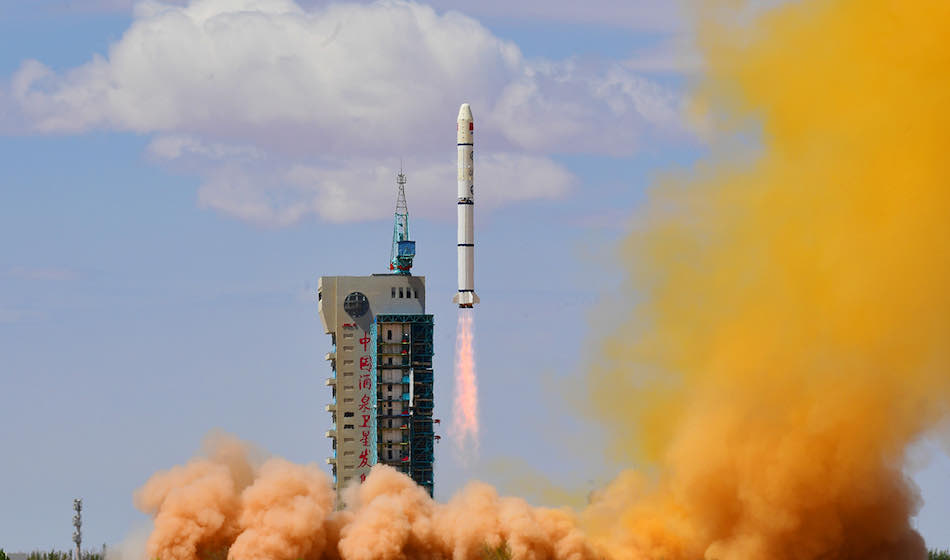Space News & Blog Articles
China launches two more space missions
 A Chinese Long March 11 rocket launches April 30 from a barge in the East China Sea. Credit: CASC
A Chinese Long March 11 rocket launches April 30 from a barge in the East China Sea. Credit: CASC
Two Chinese rockets, including one launched from an ocean-going platform in the East China Sea, deployed seven optical Earth-imaging satellites in a pair of successful missions last week.
The missions Friday and Saturday were the 12th and 13th Chinese space launches of the year, continuing a schedule of rocket flights deploying military satellites and payloads for China’s flourishing commercial space industry.
A Long March 11H rocket launched at 0330 GMT Saturday (11:30 p.m. EDT Friday) from China’s Tai Rui barge in the East China Sea, hauling five microsatellites into orbit to join the Jilin 1 constellation developed by Chang Guang Satellite Technology Co. Ltd., a commercial remote sensing company based in China’s Jilin province.
The payloads included four Gaofen 03D-class optical imaging satellites and the first in a new generation of Gaofen 04 remote sensing satellites, according to the China Aerospace Science and Technology Corp., or CASC, the largest Chinese state-owned enterprise overseeing the country’s space industry.
The satellites are designed to capture high-resolution optical images and video, collecting data for use across a range of applications, including forestry, agriculture, ocean monitoring, resource and environmental surveys, and urban planning, CASC said in a statement.
More than 40 Earth-imaging satellites, typically about the size of a microwave oven or a mini-refrigerator, have launched in the Jilin 1 constellation since 2015.
The 68-foot-tall (20.8-meter) Long March 11H rocket placed the satellites into a near-circular polar orbit about 332 miles (535 kilometers) above Earth, at an inclination of 97.5 degrees to the equator, according to U.S. military tracking data.
 The Long March 11 rocket inside its launch container. Credit: CASC
The Long March 11 rocket inside its launch container. Credit: CASC
The launch marked the 13th flight of a Long March 11 rocket, and the third to blast off from a sea-based platform. The four-stage Long March 11 is sized for small satellite missions. It burns solid propellant, and is based on Chinese ballistic missile technology.
CASC said there are one to three sea-based Long March 11 launches scheduled this year.
The Long March 11 launch followed less than 24 hours after the blastoff of a liquid-fueled Long March 2C rocket from the Jiuquan space center in the Gobi Desert of northwestern China.
After launching at 0411 GMT (12:11 a.m. EDT) Friday, the roughly 141-foot-tall (43-meter) Long March 2C rocket headed south from Jiuquan with two high-resolution imaging satellites for China Siwei Surveying and Mapping Technology Co. Ltd.
The two-stage rocket delivered the Siwei 1 and 2 satellites into a polar orbit at an altitude of about 300 miles (490 kilometers), with an inclination of 97.5 degrees to the equator.
 A Long March 2C rocket lifts off April 29 from the Jiuquan launch base. Credit: CASC
A Long March 2C rocket lifts off April 29 from the Jiuquan launch base. Credit: CASC
The satellites, also known as SuperView Neo 1-01 and 1-02, will take optical images at a resolution of a half-meter, or about 1.6 feet, for purchase by commercial clients, serving many of the same applications as the Jilin 1 constellation
The U.S. military catalogued nine objects in orbit from the Long March 2C mission, more than the expected number of three objects, including the two Siwei satellites and the Long March rocket’s upper stage.
But the identities of the additional objects were not immediately known. The objects could be debris or undisclosed payloads that accompanied the Siwei satellites into orbit.
This email address is being protected from spambots. You need JavaScript enabled to view it. the author.
Follow Stephen Clark on Twitter: @StephenClark1.
When you subscribe to the SpaceZE News Feed, we will send you an e-mail when there are new updates on the site so you wouldn't miss them.

